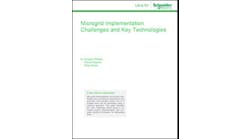By Elisa Wood
June 4, 2008
What is good news for the environment is often bad news for the economy. Or least that’s the conventional wisdom.
The thinking is bolstered by government findings that industrial activity and Gross Domestic Product will drop if the nation adopts a leading proposal before Congress to reduce greenhouse gases. http://www.eia.doe.gov/oiaf/servicerpt/s2191/index.html
But the number crunchers may be forgetting an important input: Energy efficiency. So says a report released this week by the American Council for an Energy-Efficient Economy.
Many states are aggressively pushing energy efficiency as a way to reduce consumption of fossil fuels, which in return leads to greenhouse gas reductions. Energy efficiency also can cut back energy costs, create jobs and grow the GDP, says the ACEEE report. http://www.aceee.org/press/e084pr.htm.
So far national policymakers are failing to recognize the role energy efficiency plays, as they discuss rising energy costs and climate change.
“As it becomes more apparent that climate change legislation must be enacted, it is critically important for policymakers to be informed about energy efficiency’s contribution to the solution,” says Vanessa McKinney, co-author of the report with John A. “Skip” Laitner. “It is very clear that policymakers are not getting the full picture when energy efficiency’s potential is omitted from policy assessments.”
The report looks at what will happen if the nation reduces energy consumption 20% to 30% through more efficient products and practices. The energy efficiency industry will likely add 500,000 to 1.5 million jobs by 2030. The GDP would grow, not decline, by 0.1%.
If energy efficiency is so good, why not add even more? Interestingly, the report also warns, by way of footnote, that there can be too much of a good thing. “Presumably one can push the savings too hard and too fast so that negative impacts will, indeed, begin to emerge.” Hence the report authors offer a “cautionary note about appropriate choice of the timing, technologies and policy instruments.”
It’s unclear at what point efficiency becomes a cost burden, says the report, but a 20% to 30% goal seems to still produce economic benefit.
So the challenge for state policymakers is to find the proper pacing. Adding efficiency incentives can increase electricity rates. That’s why in many states, like New York, regulators are undertaking careful study before offering new subsidies. Too much too fast will create ratepayer backlash. But carefully planned efficiency programs offer benefits that are hard to dispute, an alignment of the unlikely bedfellows, economy and environment.
Visit energy writer Elisa Wood at www.realenergywriters.com and subscribe to her free Energy Efficiency Markets newsletter and podcast.





